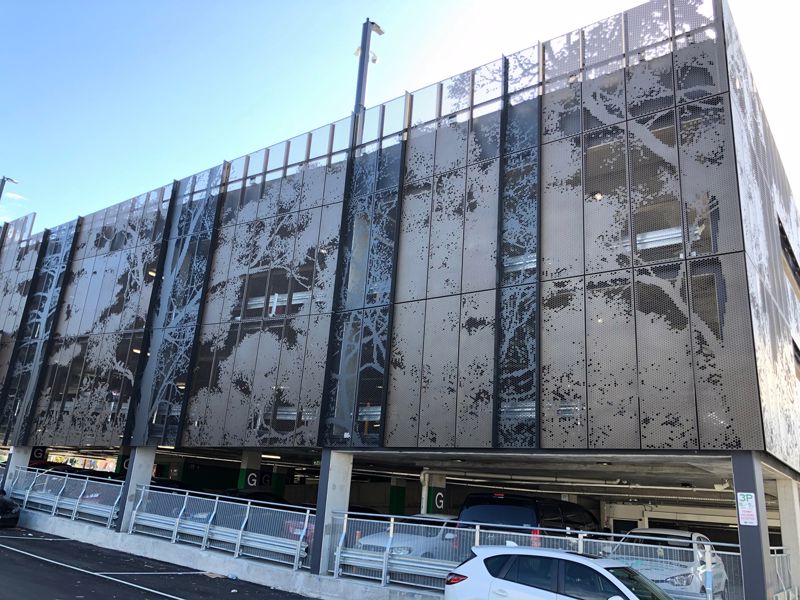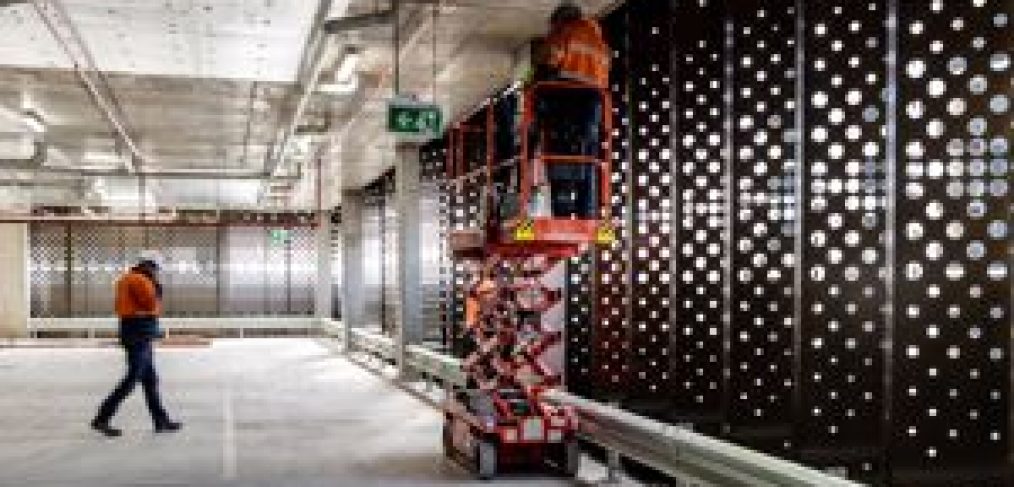Perforated metal is used for more than just sieves or drainage. This metal design is perfect for a number of unique applications that stretch from sun protection and temperature control to wind resistance and dividers. The history of perforated metal panels offers a glimpse into some of these applications throughout time. We'll take a look at how perforated metal was used originally and how technology has made it possible to use the material in architecture like we do today.

History of perforated metal
Perforated metal has appeared in both industrial and commercial spaces. Its characteristics include flexibility, versatility, and, depending on the material you use, longevity. A perforated metal sheet has holes of a defined shape and size that can come in a standard circular shape at 1 millimetre or can be customised.
In the early days of perforation, rudimentary techniques were used to create holes. The initial uses weren't for decoration but for sieving cheese in the area of modern-day Poland according to National Geographic.
Eventually, early civilizations discovered new uses for perforated sheet patterns for art, warfare and domestic needs. Perforation was even used to punch holes into coins, either so the currency could be strung together or to save on materials.
As sheet metal became more commonplace, perforated metal sheets were used during hand-to-hand combat so soldiers could protect their heads in battle while having the ventilation necessary to breathe. Some ancient examples come from the Sumerian culture in 2500 BCE.
Up until the industrial revolution in 1760, metal sheets were hand-flattened using stones or other tools and the holes were punctured using rudimentary tools. In 1615, the first rolling mill was small, hand-driven and primarily used to cut jewellery or machine roll lead for stained glass. The industrial rolling mill offered a revolutionary concept that would save time, money and labour hours.
Finally, in the 1800s, machine-punctured metal was created to drill holes into thick plates. The creative freedom derived from machinery developed into shearing, forming and folding the metal — thus creating the uniform perforated material and sheet metal pattern we know today.
How perforated metal is made today
Today, hydraulic machines consisting of a punch and a die make perforated sheets. The metal is first punctured and then the excess metal is pushed out to create an open area. Metal products such as stainless steel or aluminium can vary depending on hole size, pattern and perforated image designs.
Modern perforated sheet metal machines have the capacity to punch between 120 to 500 hits per minute where two to four rows are perforated with every hit. For architectural products, however, often the manufacturer will use linear punches instead due to the need for more precise detail and, if needed, variances in the shapes and sizes required on the sheet.
Perforated metal sheets are incredibly versatile and can be flattened or folded to create the architectural design you're looking for. It could be the perfect stylized sunscreen to pull your outdoor facade together. Architects can use it for visual depth, and creativity with light filtration, stairs, screens, a perforated facade or balustrade designs. It's perfect for outdoor use because it can withstand harsh weather conditions and even control or equalise the pressure thanks to the strength of the material.
We use a program called Pic-Perf® which develops varying hole sizes to create an image on the metal sheet using bigger, smaller hole punches. Typically, our customers will send over an image they want depicted in the final sheet, Pic-Perf® then creates a series of holes to create the image
taking into consideration the local lighting.
If you're interested in using perforated panels in your next project, contact a Locker representative today.

